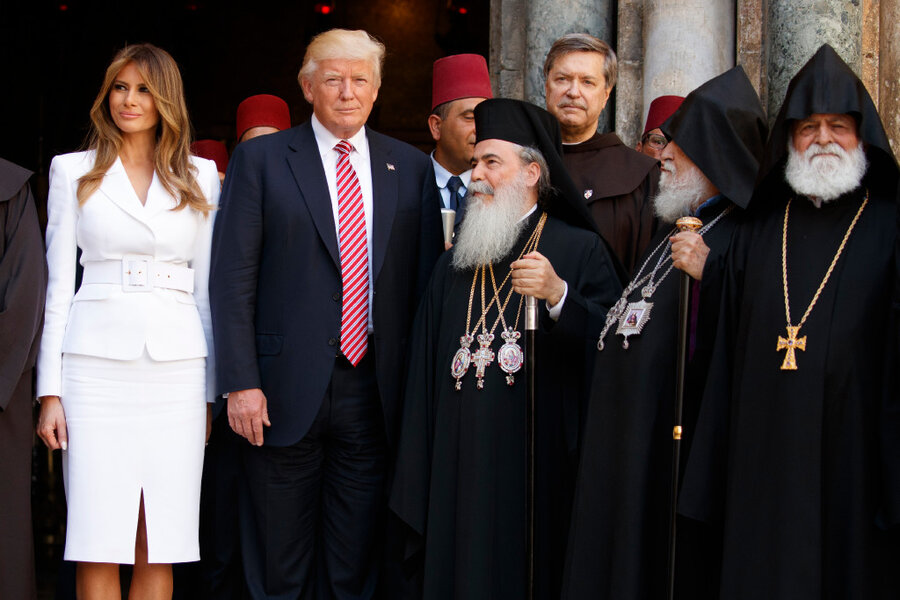Trump’s fresh approach to the Middle East
Loading...
By example as much as by words, President Trump has used his maiden trip abroad to demonstrate a fresh direction for the Middle East, one that could be called ecumenical diplomacy. First he visited Islam’s birthplace, Saudi Arabia. Then he was off to Israel, the center of Judaism. And finally on May 24, he visits the Vatican, governing entity for about half the world’s Christians.
This tour de faiths is based on Mr. Trump’s hope that leaders in the three religious hubs will find some unity based on a shared Abrahamic conception of a loving God.
How is his approach different from other presidents in the post-9/11 era?
President George W. Bush mainly pushed for political rights in the region, even by the use of force in Iraq. President Barack Obama emphasized human rights, even by use of force in Libya. While Trump did strike the Syrian military for its use of chemical weapons, the focus of his trip has been on the common principles of the main monotheistic faiths. He even said the Middle East, as the birthplace of the three religions, is waiting for “a new renaissance.”
Yet to achieve that goal, the president had to label groups such as Al Qaeda and Islamic State as outside religion. The struggle against terrorists, he stated in a speech in the Saudi capital of Riyadh, “is not a battle between faiths, different sects, or different civilizations.” It is simply a “battle between good and evil.”
He asked the region’s religious leaders to make clear to those who purposely kill innocent people that their “life will be empty.” The path of terror brings “no dignity.”
In other words, the common theology of Islam, Judaism, and Christianity must bring light and cannot tolerate terrorism’s dark ideology. In an action along those lines, he convinced the six Arab nations in the Gulf Cooperation Council to agree to new ways to cut off sources of money for radical groups.
Trump also fingered those leaders in Iran who support the killing of civilians by such foreign groups as Hezbollah in Lebanon and the Bashar al-Assad regime in Syria. One early test of Trump’s approach will be in how he deals with a few leaders in Iran who oppose the government’s support of foreign radicals. The last two elections for president in Iran, while rigged in the selection of candidates, did reflect strong public opinion against extremism and for a focus on the economy and individual rights.
In fact, in reelecting President Hassan Rouhani on May 19 by a wide margin, Iranians suggest they seek a voice in choosing the replacement for Supreme Leader Ali Khamenei and a curb on the military forces of the Iranian Revolutionary Guard Corps (IRGC.
In his victory remarks, Mr. Rouhani said the election showed that Iran seeks “a path which is distant from extremism and violence.” And during the campaign he called for “freedom of thought” and criticized the IRGC’s test-firing of a missile inscribed with a call for Israel’s destruction. A Shiite cleric, he offered talks with his Sunni counterparts in Arab states.
With Trump’s alternative approach, moderate religious leaders in the Middle East could now seek some agreement on divisive issues, especially terrorism. The enemy lies not in other religions but rather each faith’s inability to see the common good in each other.







